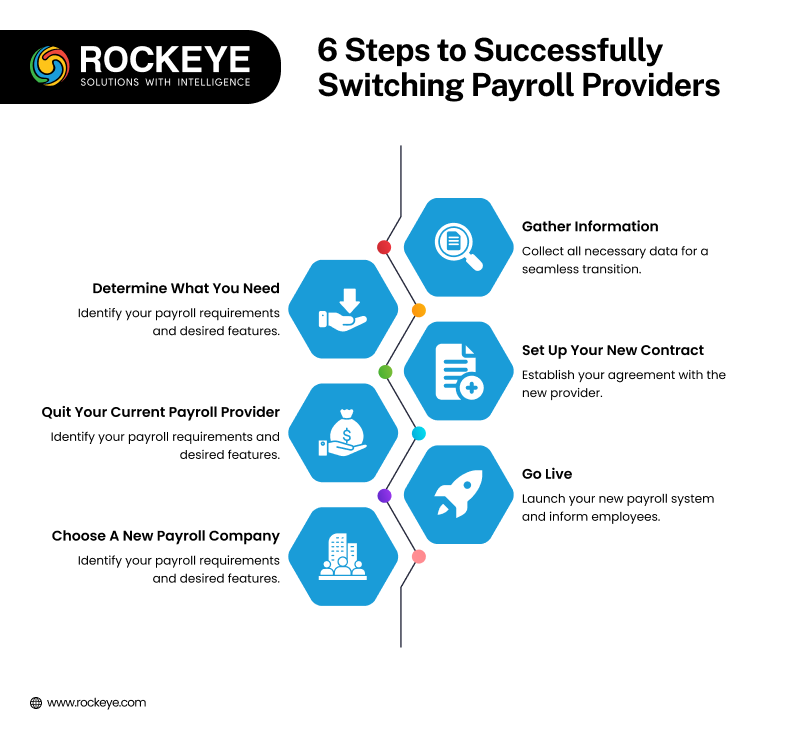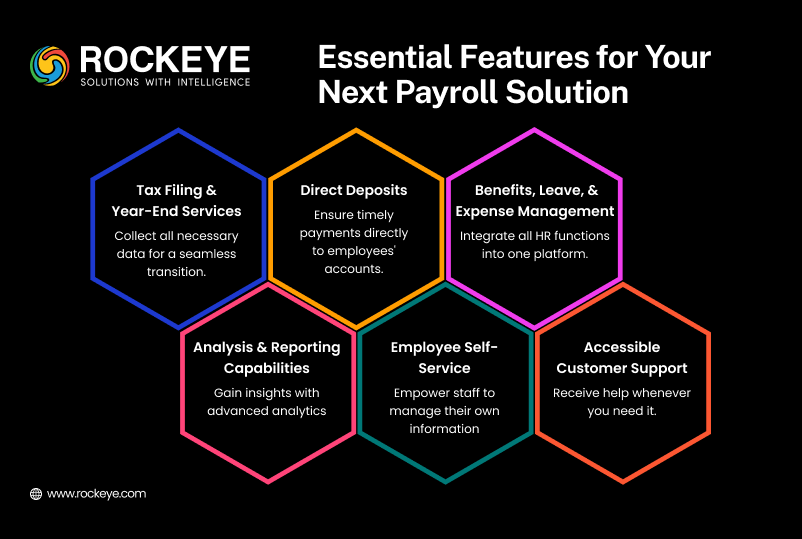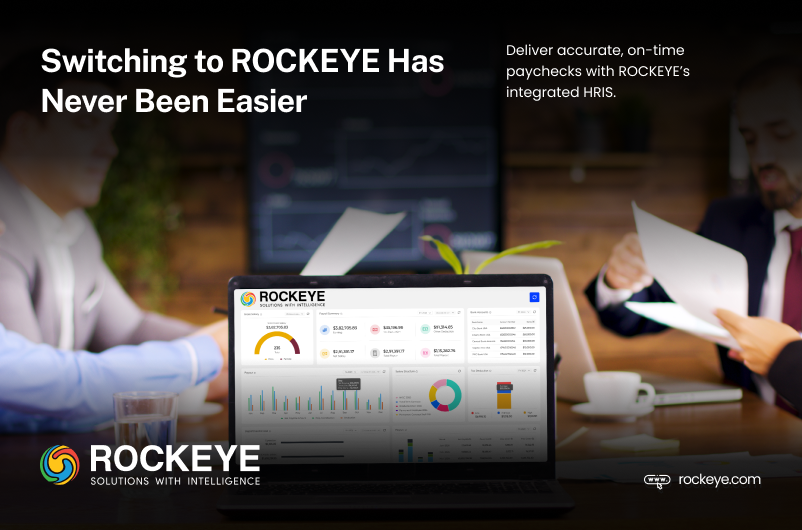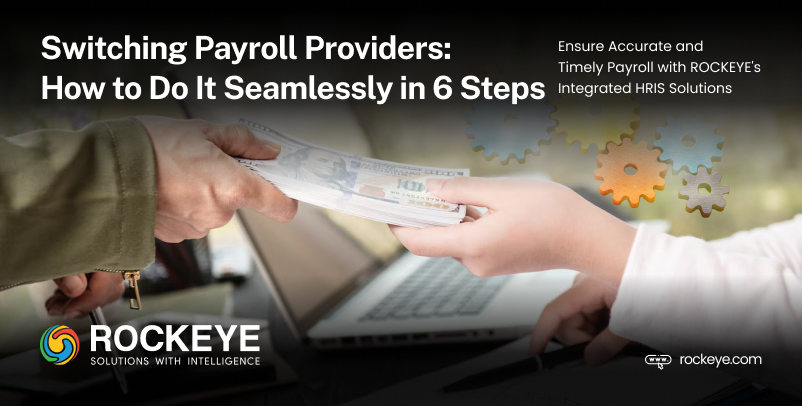There is a tried-and-true process for switching payroll providers, no matter what time of year it happens to be.
Current payroll provider giving you consistent issues? Then it is time to make the switch.
Key points for Switching Payroll Providers :
- Payroll providers sometimes make errors, costing businesses hundreds of dollars each time.
- Understand all of the features you need from a new provider before switching payroll providers, especially benefits and expense management integration.
- Stagger your switch to a new provider in case anything goes wrong during the changeover.
At first glance, payroll processing appears fairly straightforward. Your payroll system ensures you pay every employee on time and according to their efforts.
In reality, payroll is often rife with incorrect payments, missed payments, or unnecessary deductions. In fact, according to recent reports, around 53% of surveyed companies have incurred payroll errors in the last five years, primarily due to non-compliance and manual processes. Additionally, 32% of global employees reported that it takes two or more pay cycles to resolve underpayment issues. Each payroll error can cost businesses significantly, with IRS penalties alone amounting to $2.8 billion(Nasdaq)(Business Wire)(Fit Small Business).
Software woes can be to blame for these problems. Maybe your payroll provider wasn’t designed for your industry, has a lot of bugs, or simply doesn’t contain the features you need. In cases like these, switching payroll providers may be the best option, but doing so can be a pain before the end of your fiscal year.

Fortunately, there is a tried-and-true process for switching payroll providers, no matter what time of year it happens to be. Read on for more.
1. Determine What You Need
Identify weak points in your current system
Before switching payroll providers, it’s important to understand what your business needs. Additionally, you need to find a service that will prevent your current issues from happening again.
First, start with some basic questions about your workforce and their needs. How many employees do you have? Are they salaried, or paid hourly wages? Does your business employ remote workers? What about offices in multiple states? Do workers receive physical checks or direct deposits into their bank accounts?
Next, draw up your wish list for a future payroll provider. Here are some key features worth considering:
- Tax filing and year-end services: Your payroll records contain much of the raw data needed to calculate taxes. A system that accurately and conveniently handles tax payments and records will save HR colleagues time and stress. Some full-service providers take care of it all, from calculating and depositing federal, state, and local payroll taxes to filing the correct forms at the right time.
- Direct deposits: Many employees prefer direct deposits these days. Any solution capable of depositing payments into their bank accounts without the hassle of paper checks will be appreciated.
- Benefits, leave, and expense management: Integrating all essential HR functions into a single platform means you and your HR team won’t waste time managing different programs. This is especially important when dealing with benefits deductions, paid time off, and other expenses logged in payroll records.
- Analysis and reporting capabilities: Payroll data gives great insight into your company’s most valuable resource—its people. Providers with analysis and reporting capabilities often find unexpected efficiencies.
- Employee self-service: Giving employees the ability to check their own payroll records and notify you of any errors empowers your workforce to manage their own files. It is also a great way to catch problems you may have missed.
- Accessible customer support: If anything goes wrong, you will need a payroll provider capable of addressing software bugs or inconsistencies.

2. Quit Your Current Payroll Provider
Plan the best possible exit strategy for sunsetting your old provider
There are a couple of sub-steps to consider when parting ways with your current payroll provider, even if things are ending on bad terms.
Request Essential Reports
Your previous provider has been maintaining detailed payroll reports, including employee wages and taxes. Securing these reports is critical to ensure all records with your new provider are accurate. This will help you avoid discrepancies that could lead to payroll errors or complications with tax authorities.
Build a Transition Period
Payroll implementation can sometimes be unpredictable. It’s important to plan for a transition period between the end of your current provider’s contract and the start of the new one. This overlap will give you time to resolve any unforeseen issues during the setup phase and ensure a smoother switch.
Review Data and Settings
Before the handover, make sure all your data is properly reviewed and organized. Check your employee records, benefits, and deductions to ensure everything aligns with your new provider’s system. This step will help minimize any errors during the transition phase.
3. Choose A New Payroll Company
Do your research and ask the right questions of prospective payroll providers
There are plenty of payroll providers to choose from. Some are full-service Human Resources Information Systems (HRIS) that integrate a variety of HR functions like benefits and expense management. Others are standalone platforms that handle only payroll. Regardless of how clear your company’s needs are, take your time before making your final decision.
Request demos
Once you have a shortlist of possible options, reach out to each company and ask for a demo. Put every option through its paces and give your HR, payroll, and accounting colleagues enough time to fully evaluate. Check if the payroll provider’s software offers financial accounting automation.
Once everyone gives the green light to the best payroll provider for your company, call them up and schedule an onboarding session.

4. Gather Information
Make sure you have the right information to make a seamless transition
Now that you’ve chosen a new provider, you’ll need to supply them with all the information they’ll require to pay your employees on time, in full, and in adherence with all local and federal laws. Once you’ve gone through your new provider’s onboarding, send them:
- Basic corporate information: This includes your company’s legal business name and its structure. Is it a sole proprietorship, a limited liability corporation, a partnership?). You’ll also need to give your provider your company’s Employer Identification Number.
- Employee and payroll information: Your staff’s names, Social Security numbers, addresses, and earnings are all important data for your new provider. This includes both recently terminated employees and independent contractors. These records need to go as far back as the beginning of the calendar year.
- Payroll tax returns: You must register all payroll tax deposit dates and accounts. Plus, you need to register payroll tax account numbers with local and state authorities.
Also Read: 7 Easy Steps to Financial Accounting Automation
5. Set Up Your New Contract
Give yourself time to make the change
After reading over your new payroll provider’s contract and signing on the dotted line, you’ll need to pull all of your company’s relevant payroll information over to your new provider. How exactly this happens depends on the system. Some providers will require you to fill out forms or upload payroll data manually, while others may be able to import all of your data automatically.
Your new contract may be all set up—but, don’t cancel your old provider immediately. Ensure a grace period of a few days to a week after your new contract kicks in. That way, if there are any hiccups, your company won’t be stuck without a payroll provider.
6. Go Live
You’ve done it! Now it’s time for your final step
Once you dot your I’s and cross your T’s, you can officially switch from your old provider to your new one. At this point, feel free to tell your employees about the move if you haven’t already and answer any questions they have. Set your first pay date for employees in the new system and prepare for payroll.
Switching To ROCKEYE
In a perfect world, you wouldn’t need to switch your payroll provider. However, for a lot of companies, switching payroll providers is an excellent move.
ROCKEYE’s HRIS includes payroll software so you can deliver paychecks that are accurate, on time, and easy. You and your teams can work with people instead of numbers, and your workforce can focus on work instead of their paychecks. Schedule a demo with a ROCKEYE representative today to learn more.


